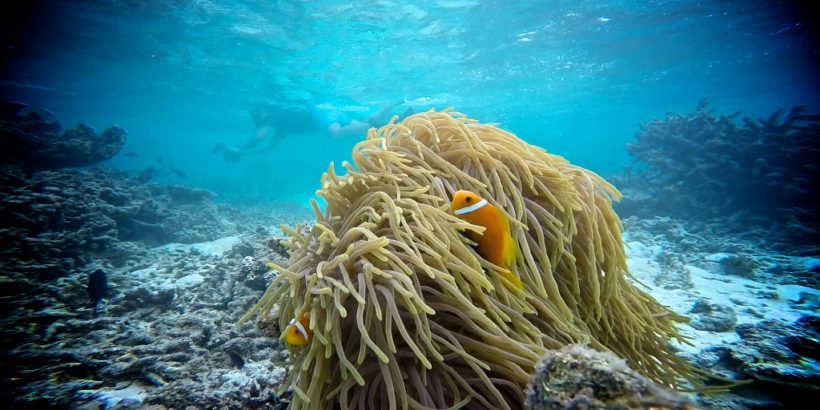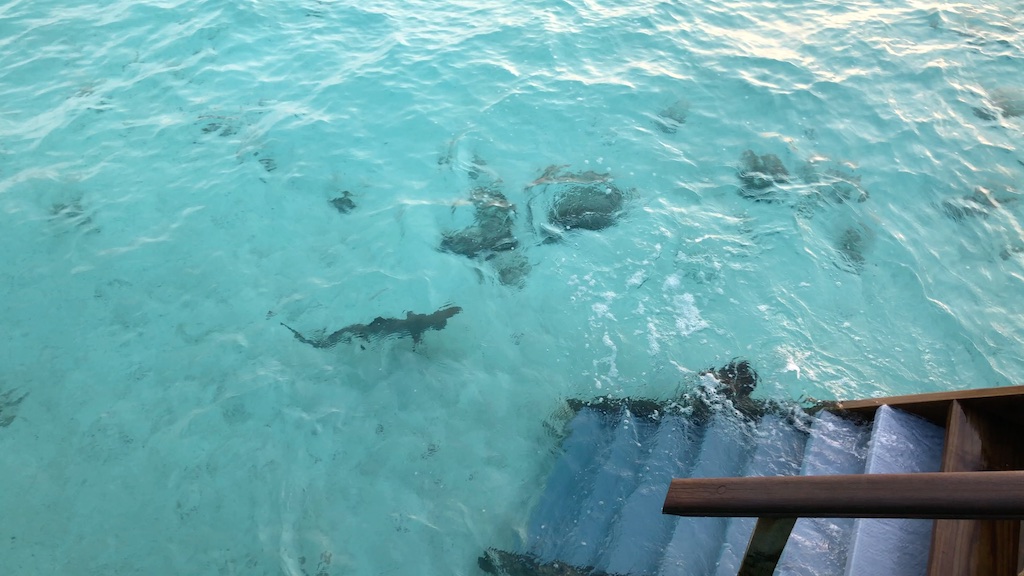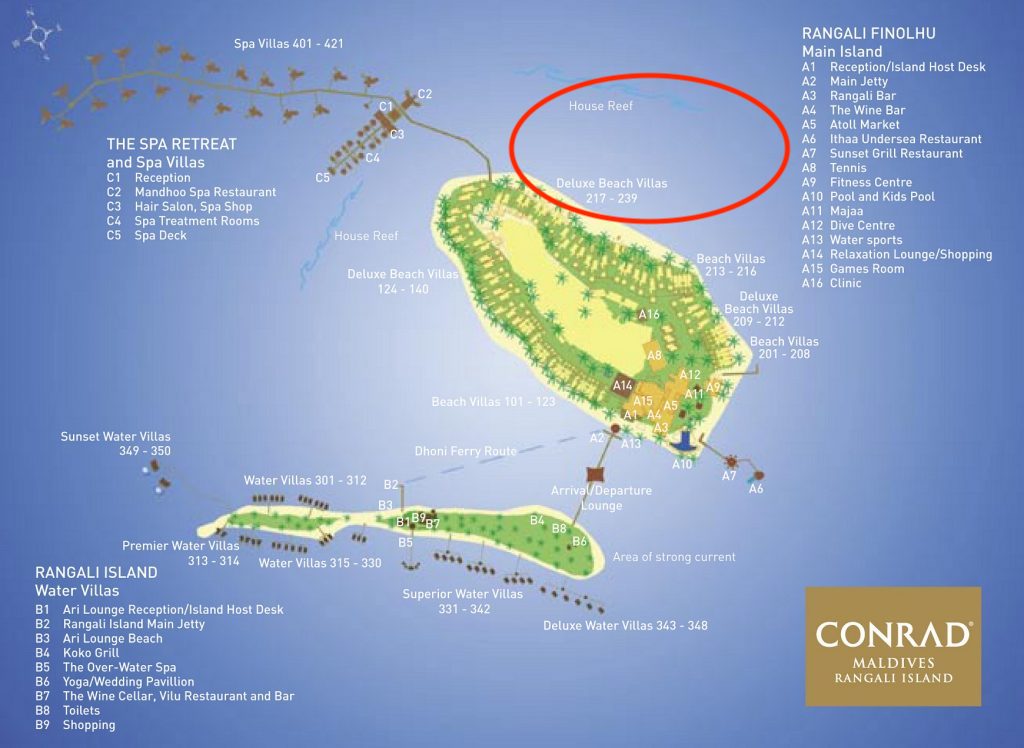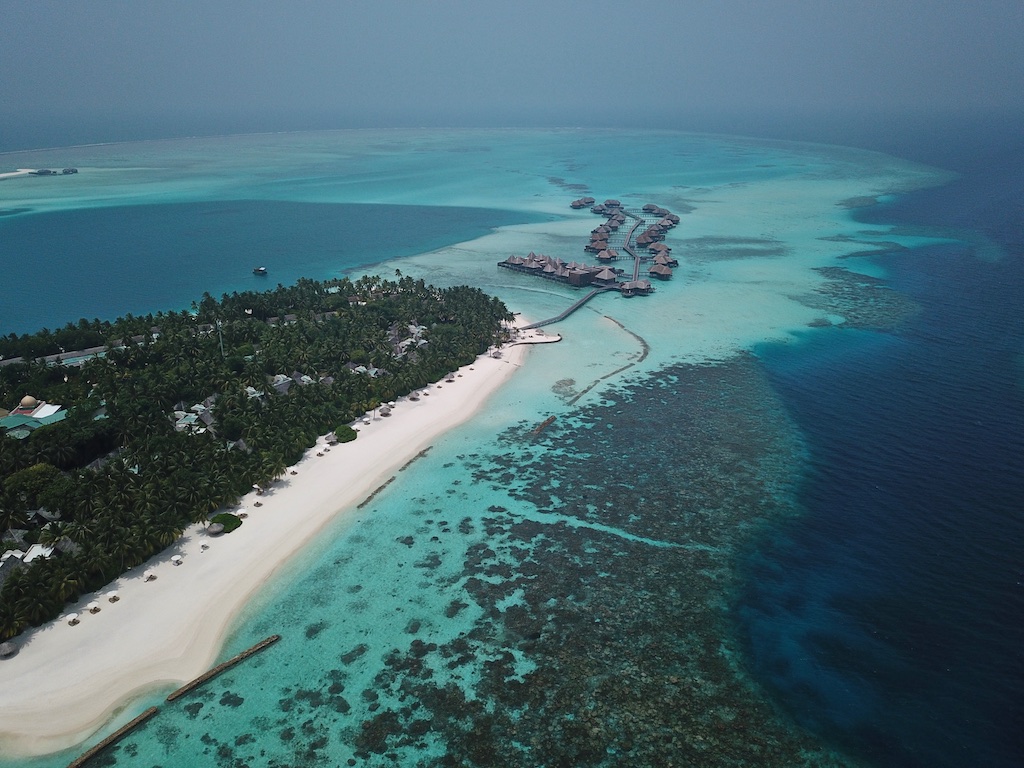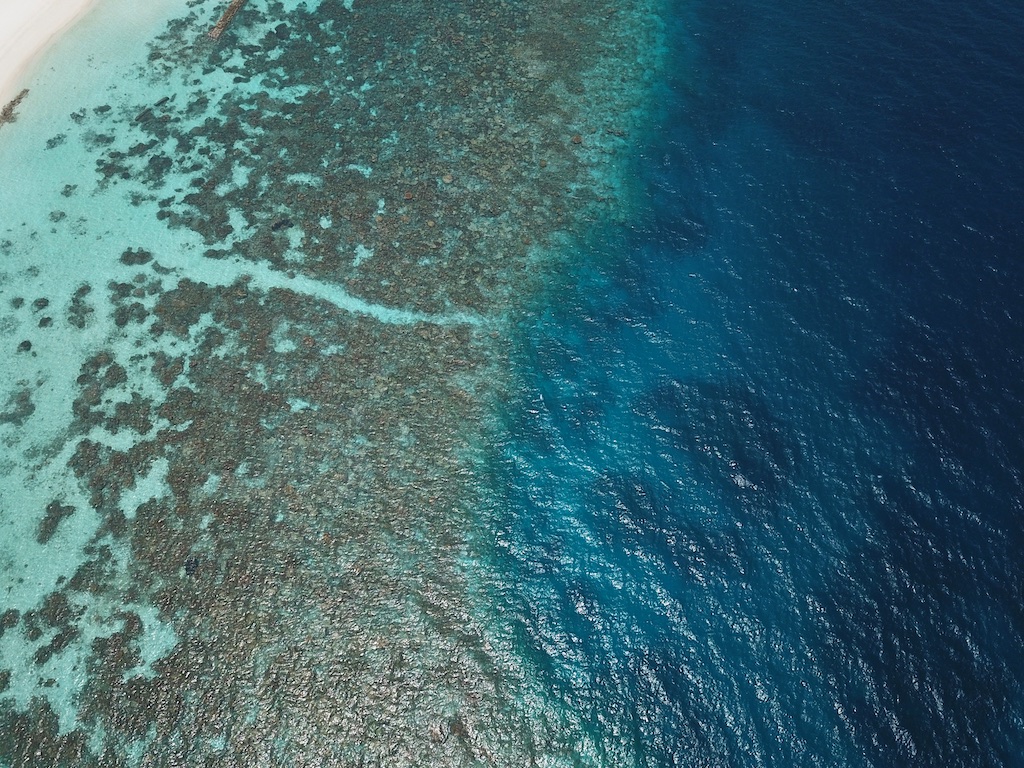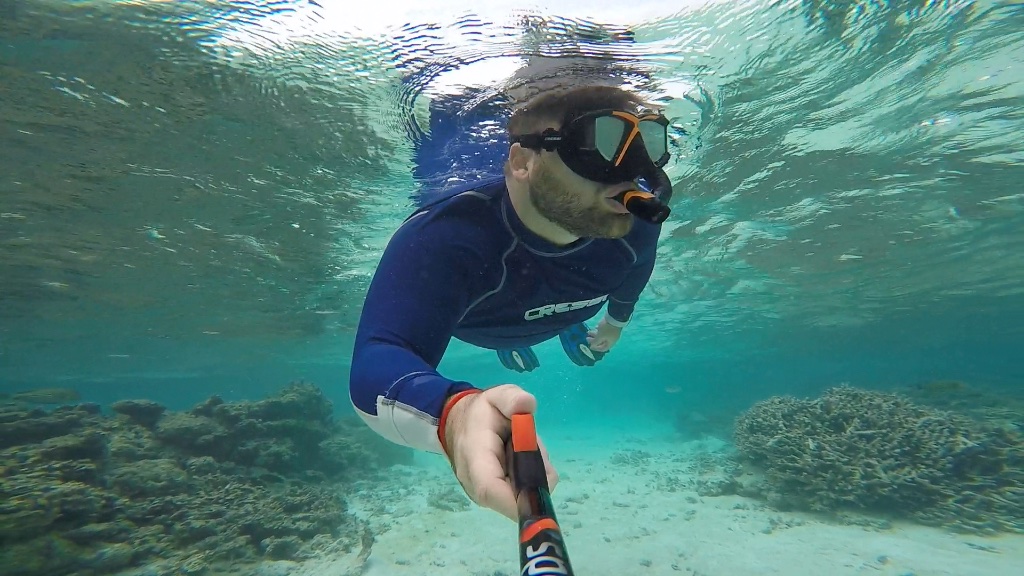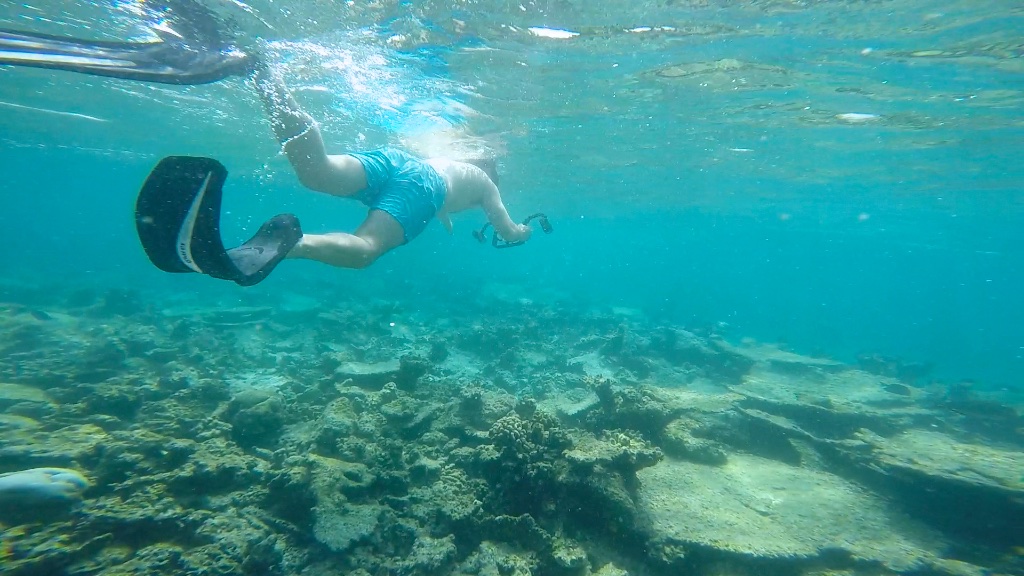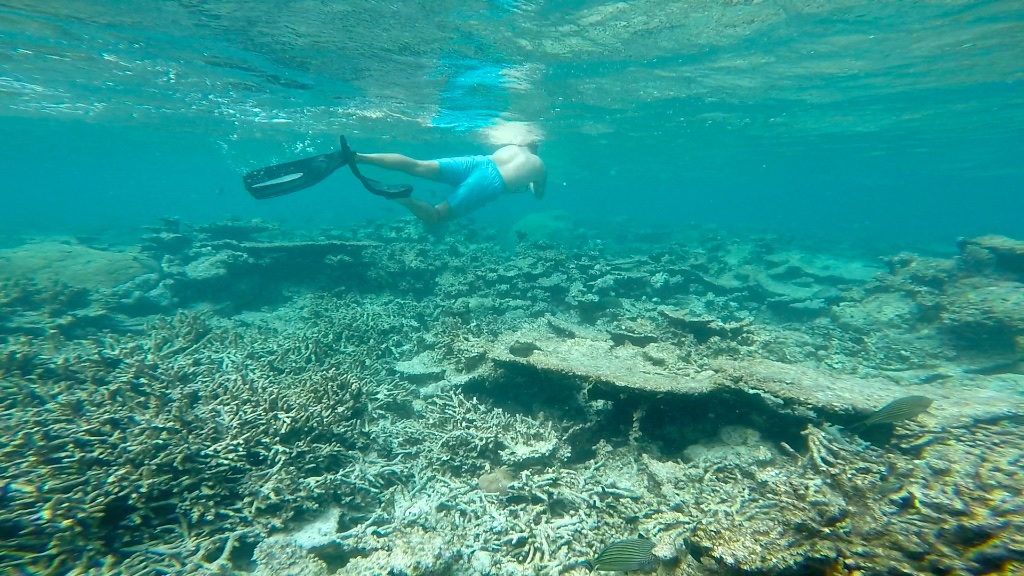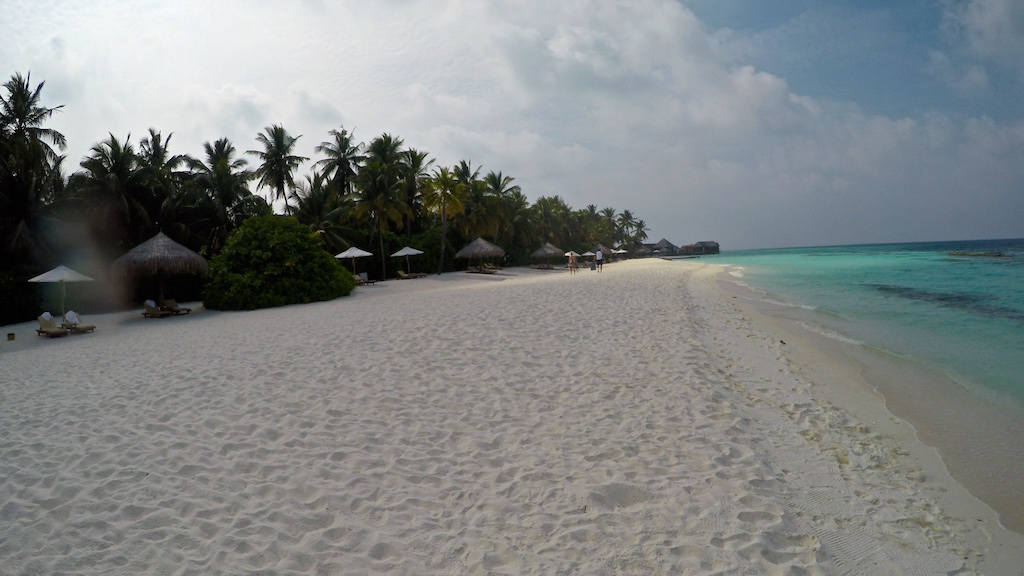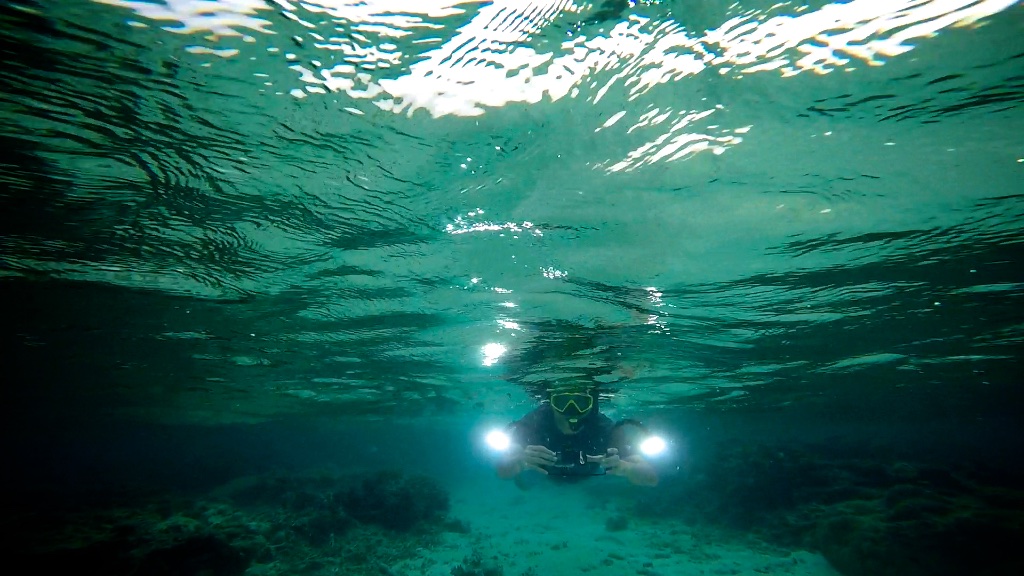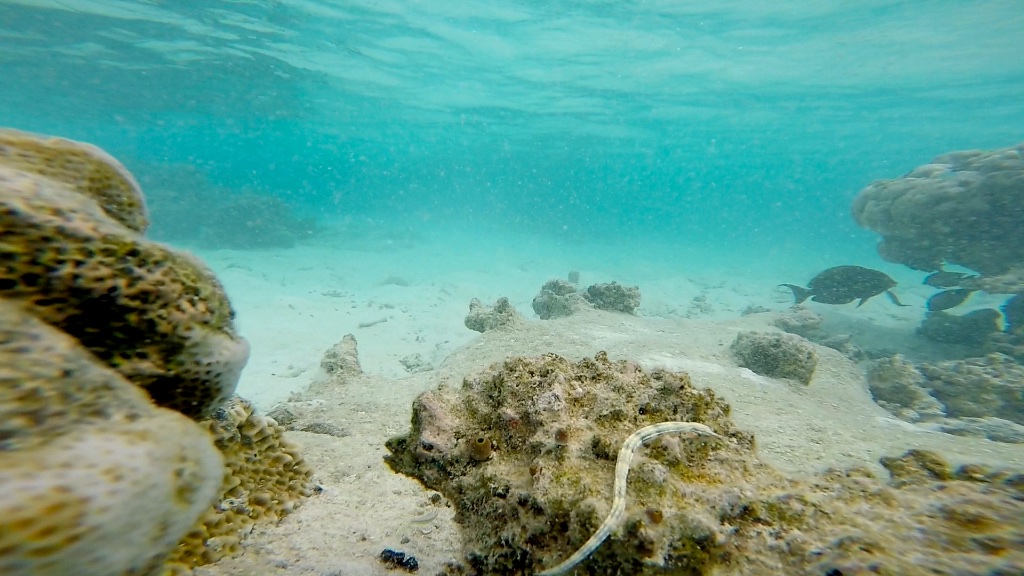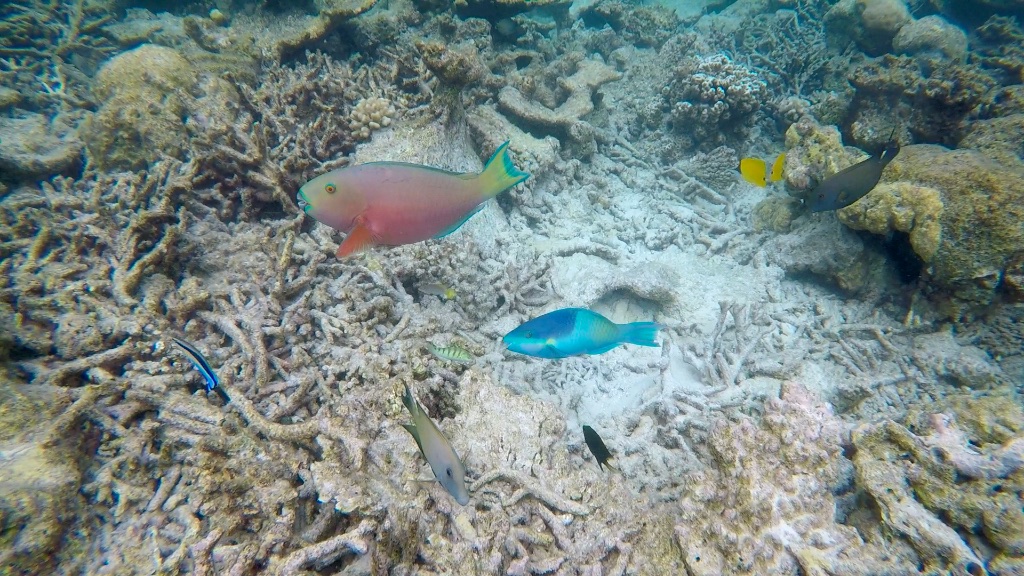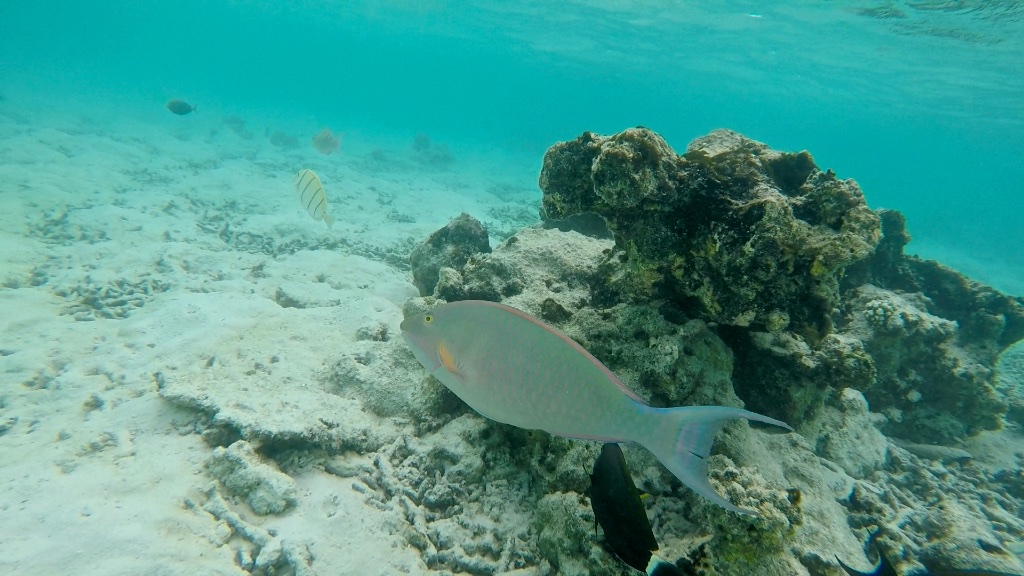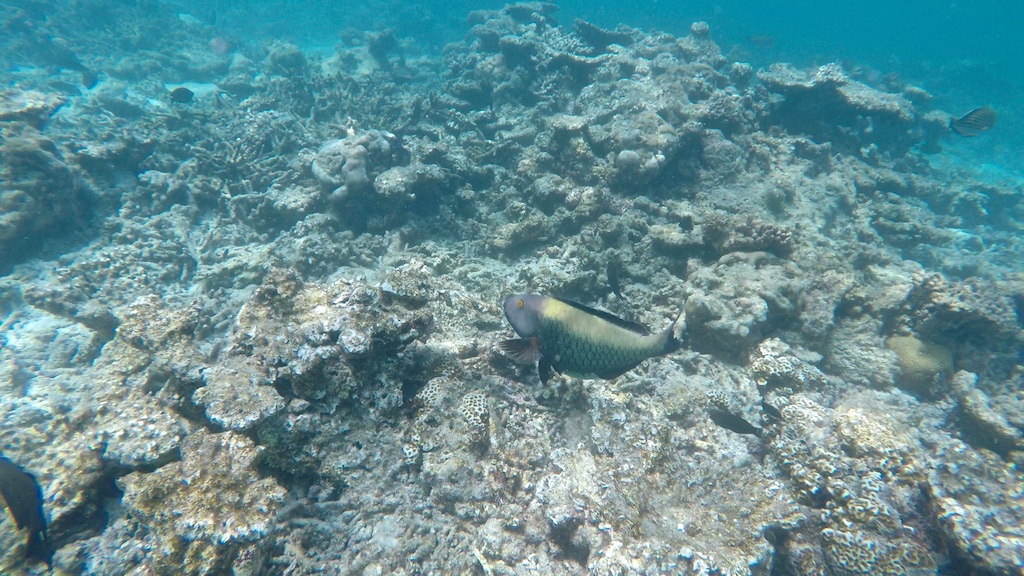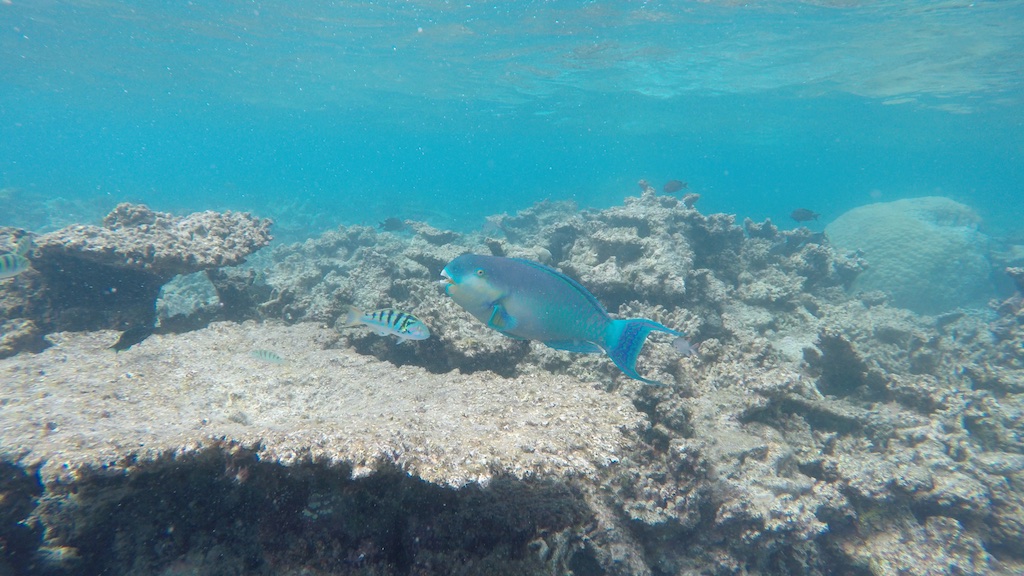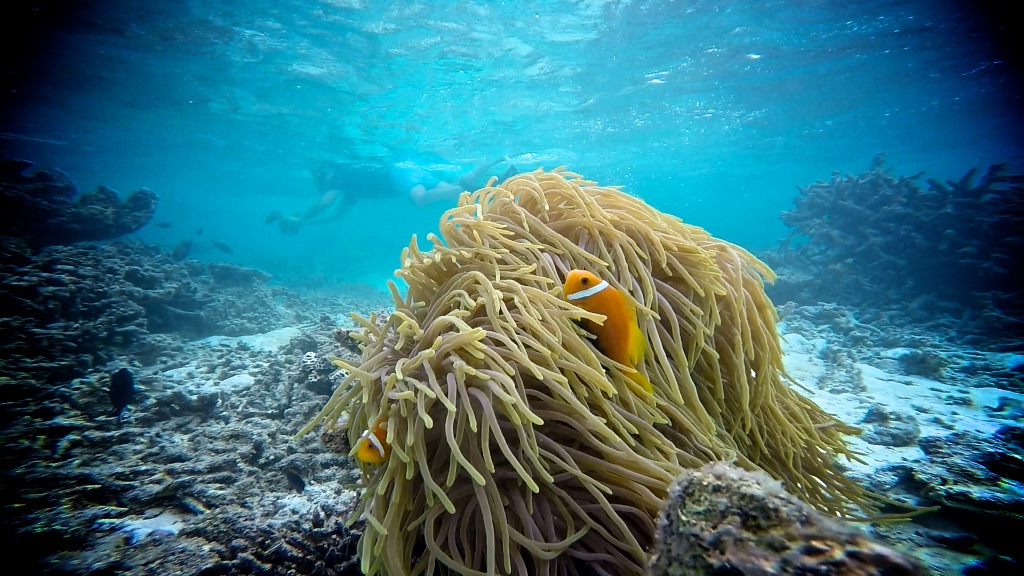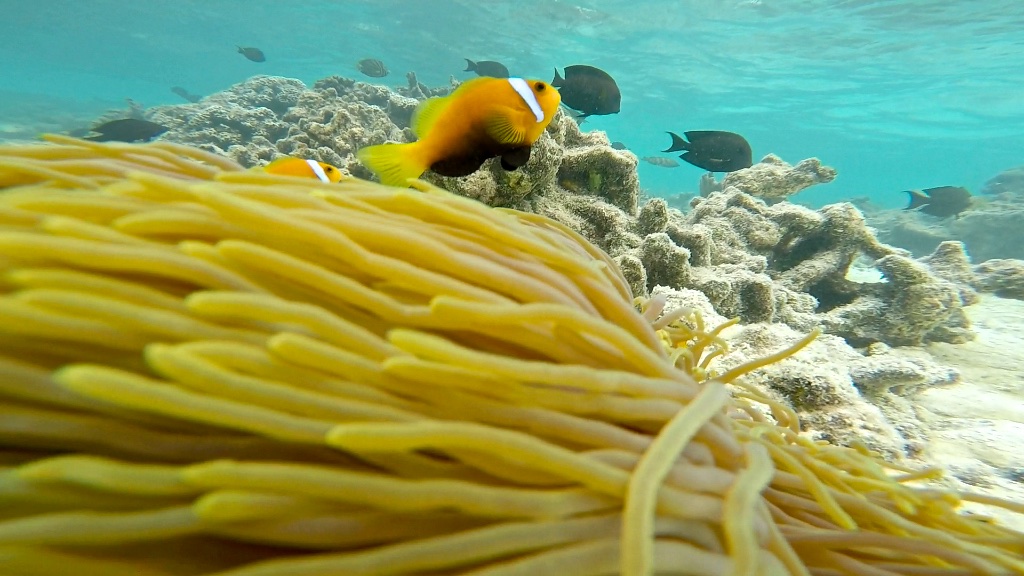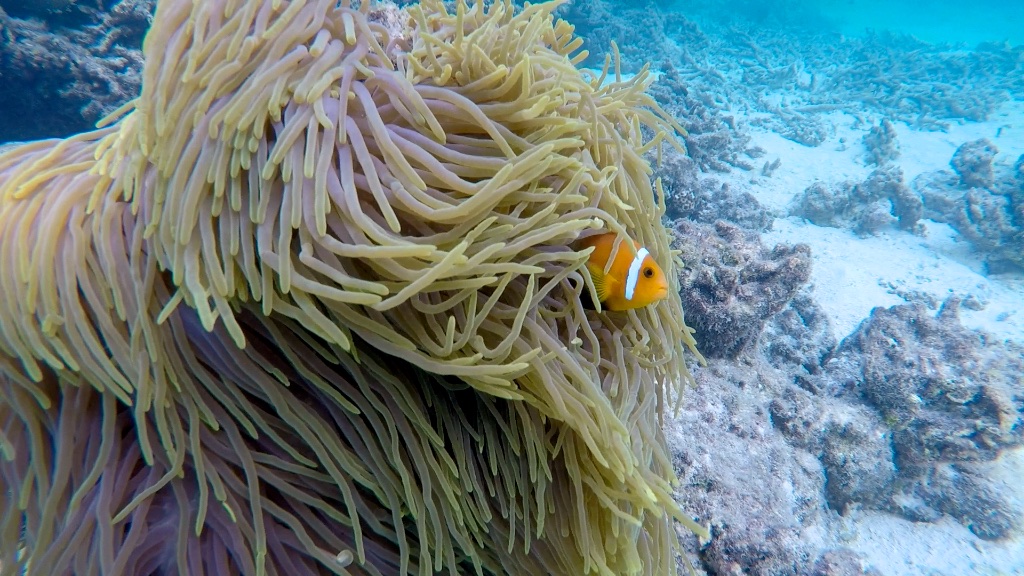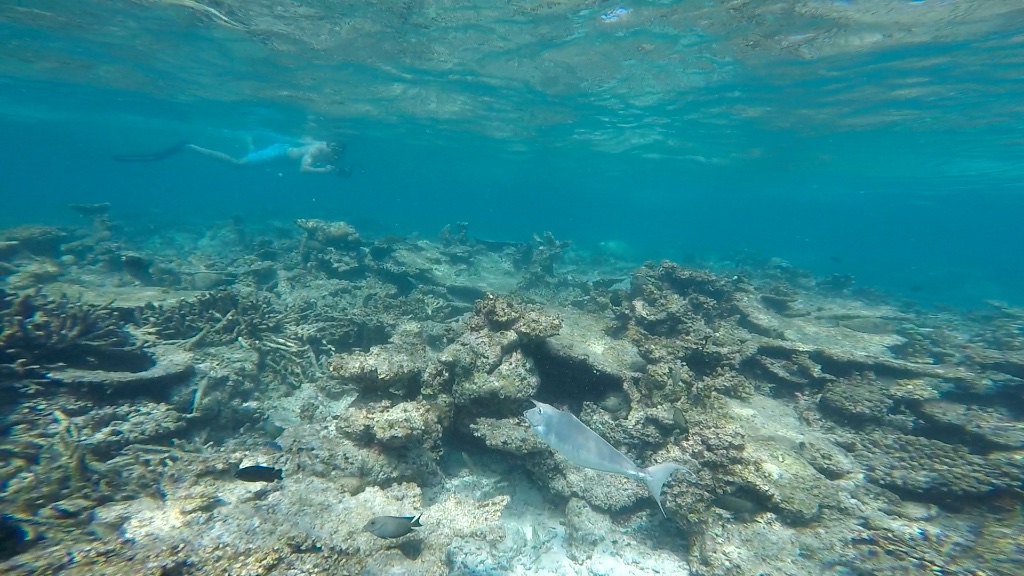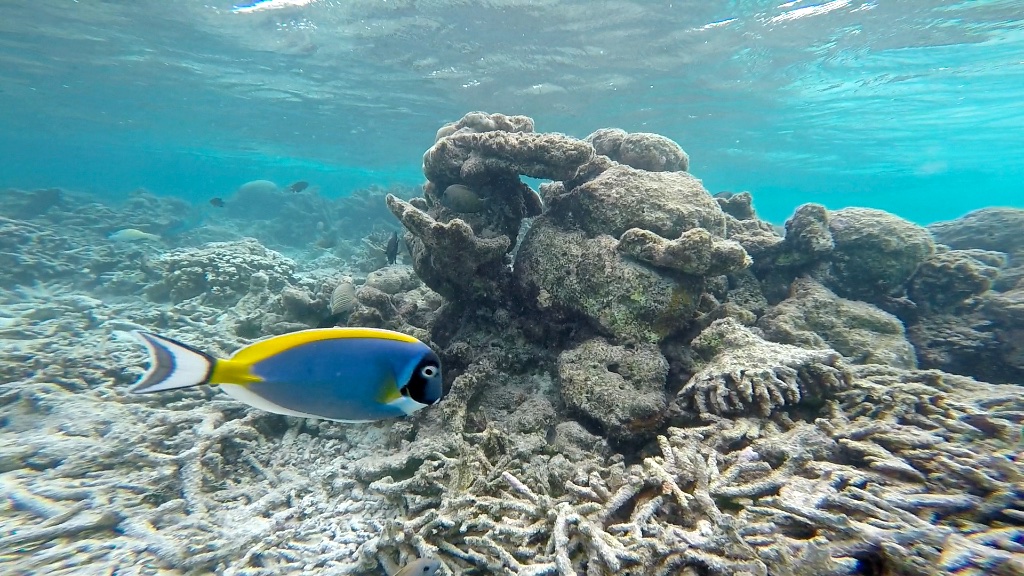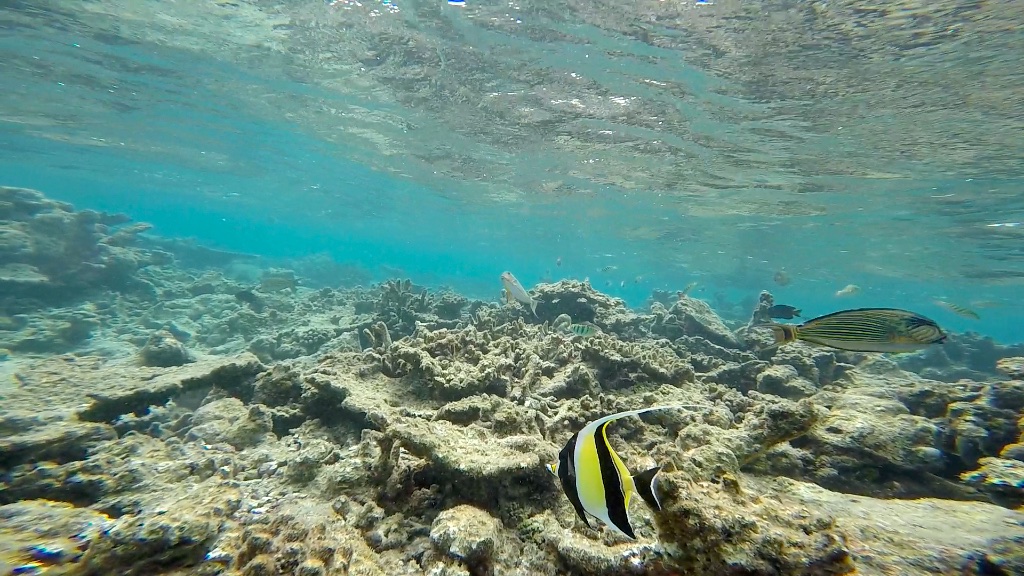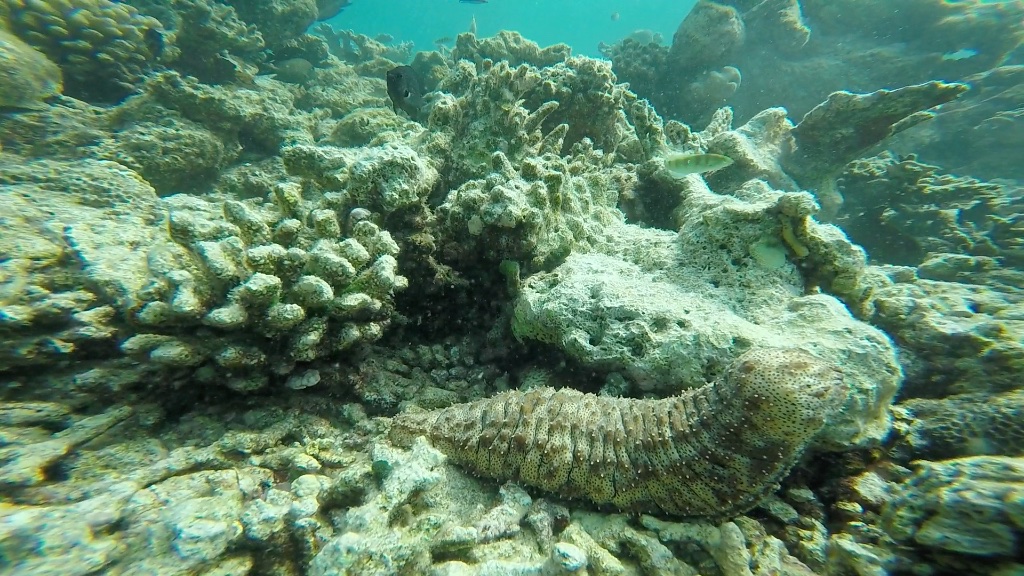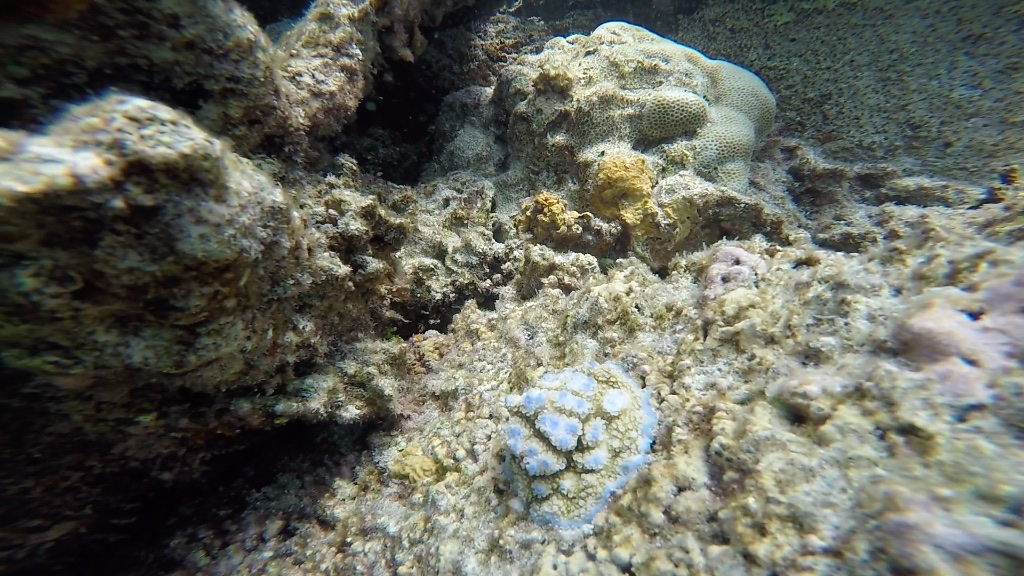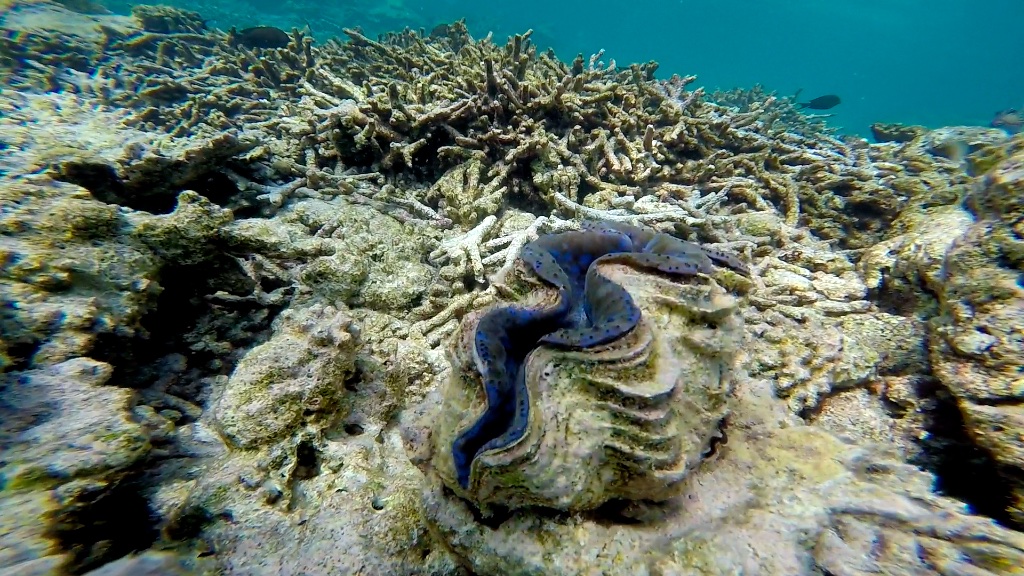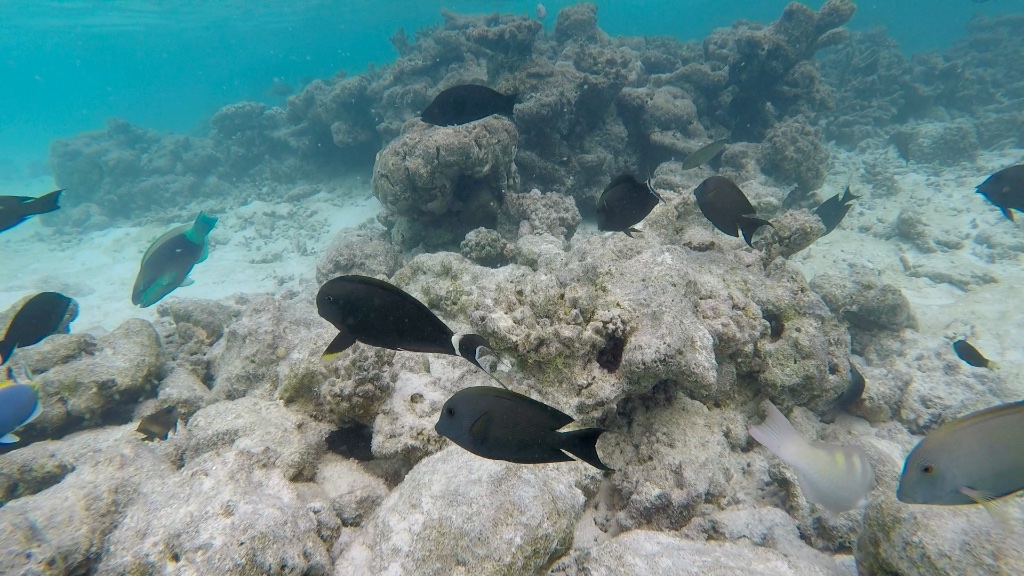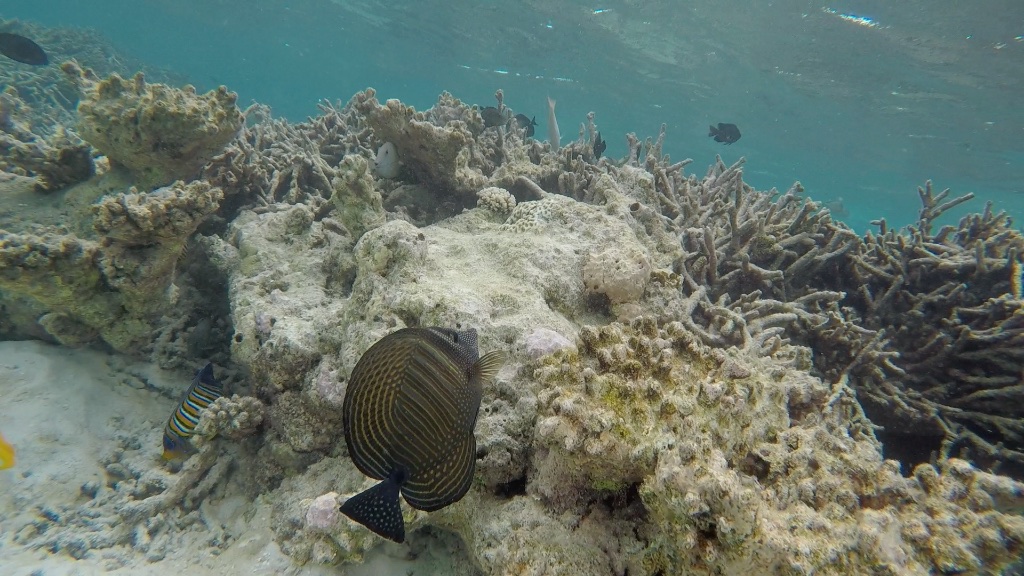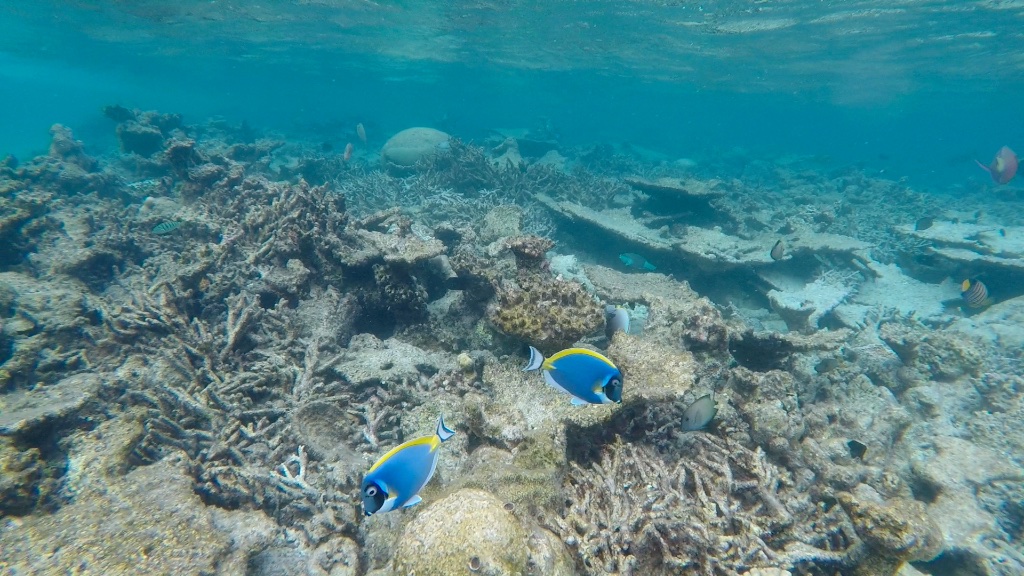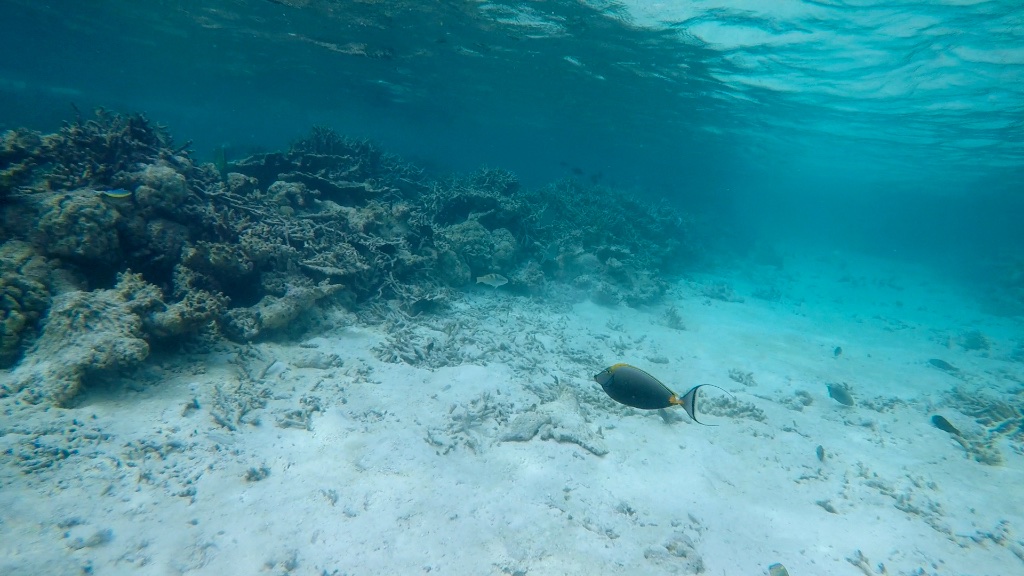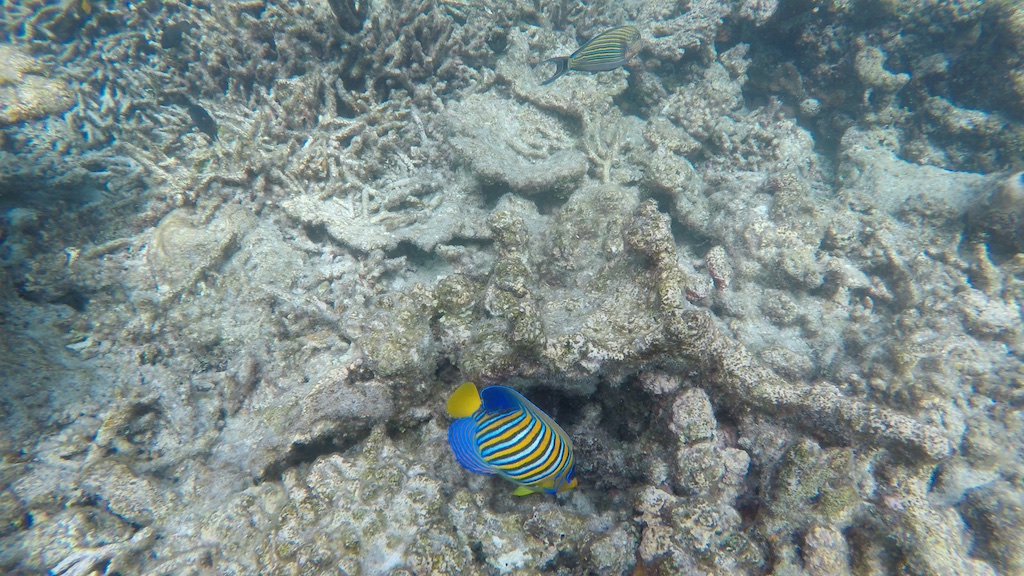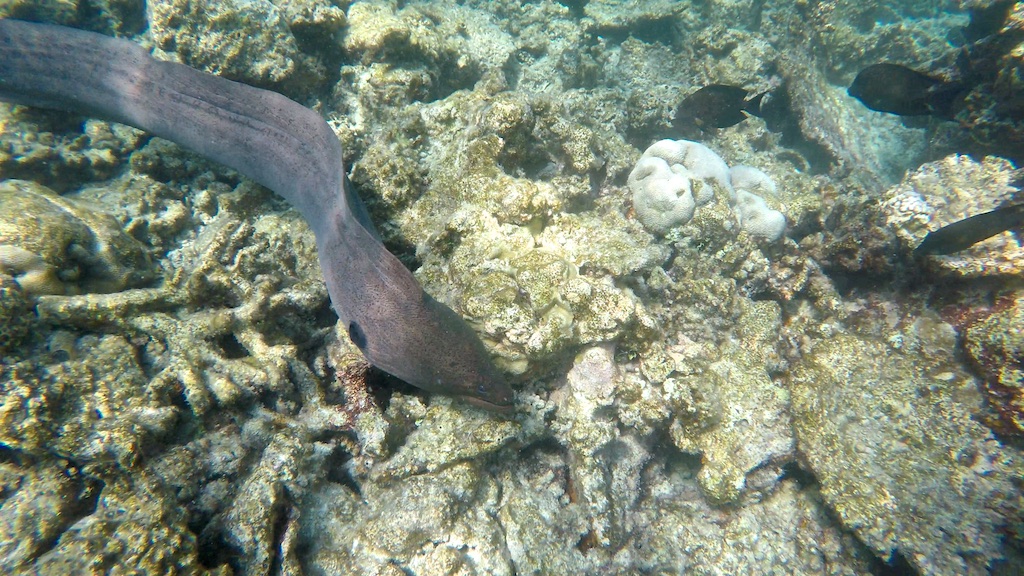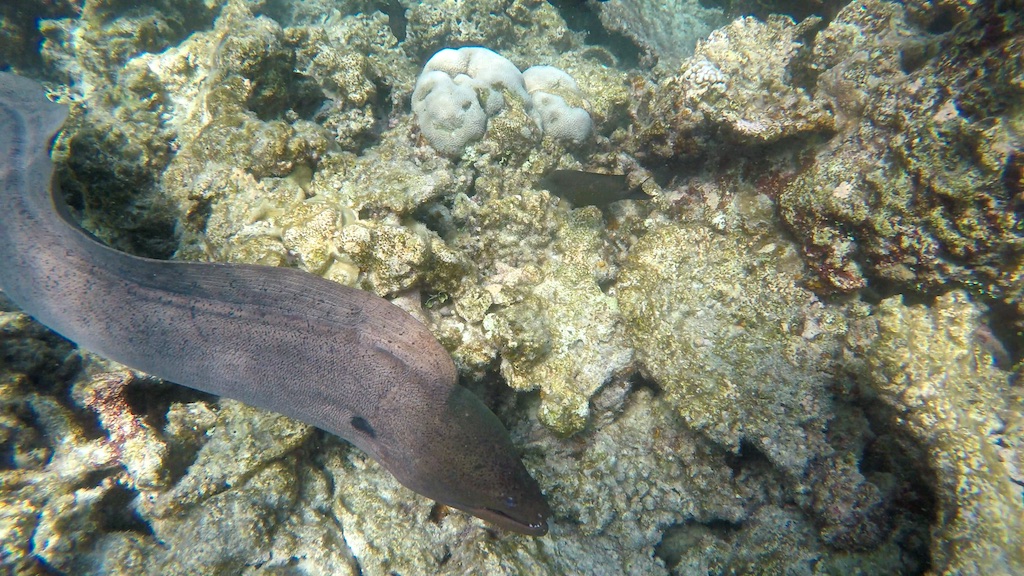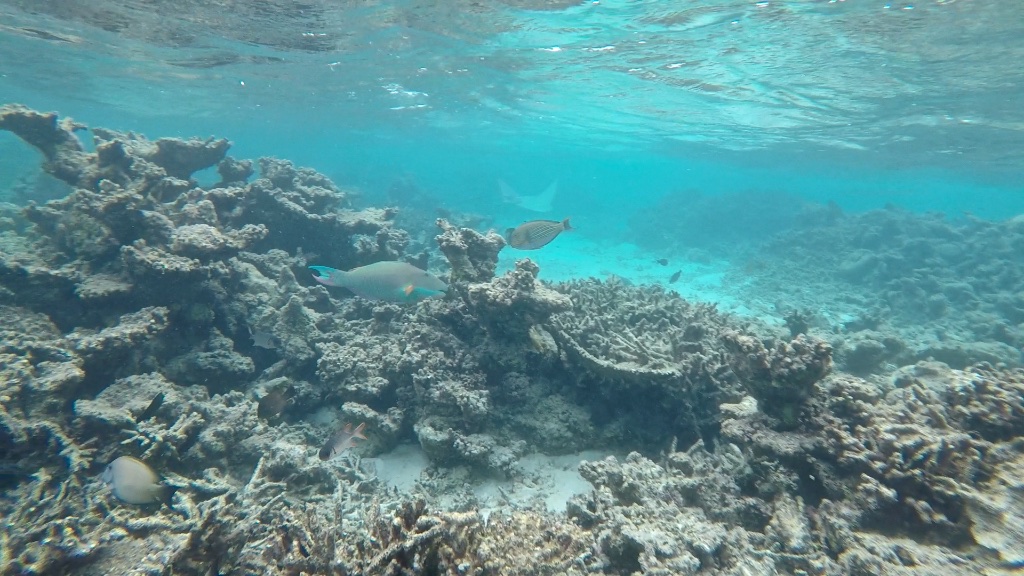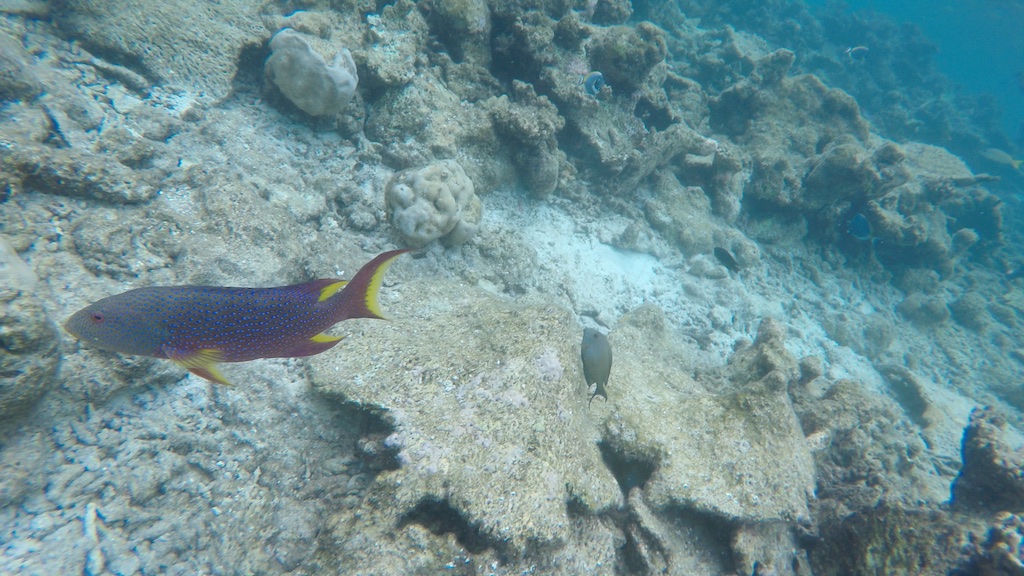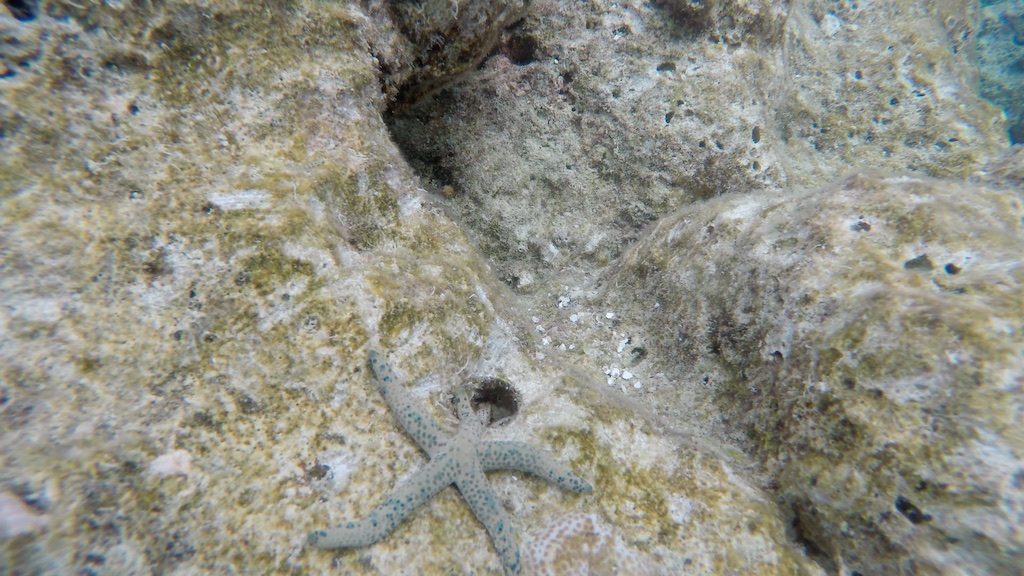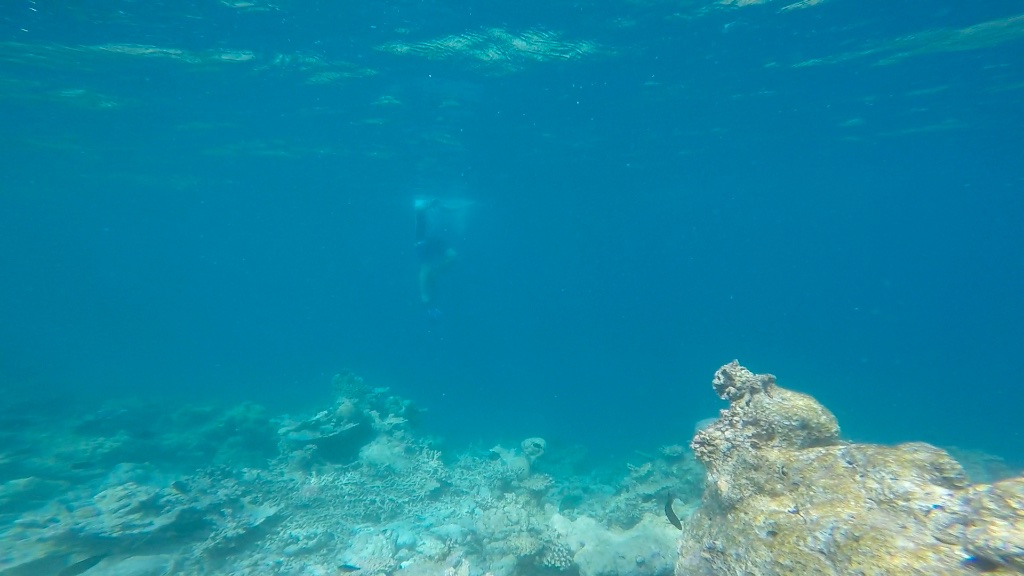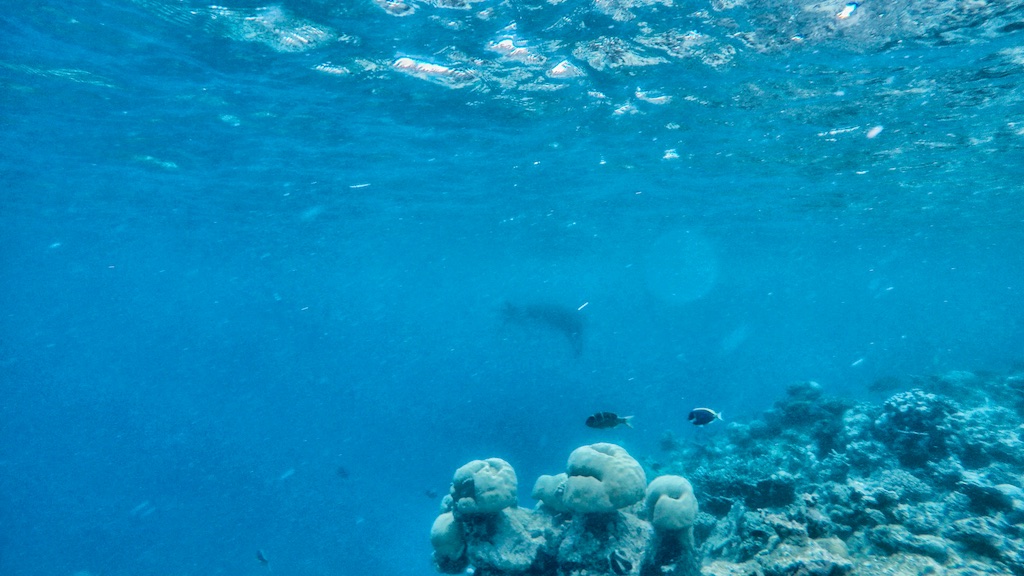Snorkeling at the Conrad Madlives Rangali Island is a must if you ever visit the resort. On our recent trip to the Conrad Maldives, we made several outings to the house reef and saw some pretty amazing wildlife including a manta ray, eagle ray, eel, clownfish, and many other types of fish. Here’s everything you need to know about snorkeling at the Conrad Madlives Rangali Island.
Interested in finding out the top travel credit cards for this month? Click here to check them out!
Table of Contents
Where to snorkel at the Conrad Maldives
There are many places that you can snorkel around the resort, such as around the various water villas and beach areas. However, the best snorkeling will take place at the house reef located on the main island.
After we arrived at our retreat water villa, we were in the ocean snorkeling within minutes. We were located at the very end of the row of villas so there’s not a whole lot of reef in that area and it’s mostly open sea bed. However, we still did see some fish, mostly triggerfish, parrotfish and some small varieties of fish.
On a few occasions we did see sharks patrolling just next to our villa and I know some other people have spotted rays in the villa area, too.
The sharks we spotted were black tip sharks although I do think that I may have seen a nurse shark once. Either way, these sharks are harmless if left alone so it’s nothing to worry about it.
Overall, the wildlife next to our villa wasn’t the most exciting and I didn’t care to snorkel there for that long after a while. We could have swam out farther but I just felt like I wanted to spend more time at the house reef where spotting marine life was a much more sure fire thing.
Tip: Use WalletFlo for all your credit card needs. It’s free and will help you optimize your rewards and savings!
Conrad Maldives house reef map
The red oval below is where the main house reef is located.
Note that the Conrad Maldives will give you will a resort map with little icons of where you can expect to find wildlife like octopus, sharks, etc. If you know anything about diving or snorkeling, you know how difficult/impossible it is to predict where wildlife will be.
I didn’t find the map to be accurate so I wouldn’t put too much stock into it when it comes to trying to find marine life.
The Conrad Maldives house reef
You would think that water villas would be better situated for snorkeling since all you have to do is walk down some steps to enter the ocean. However, the Conrad Maldives house reef is located on the main island just outside of some of the beach villas. So if you’re staying in a beach villa, you might have prime real estate for snorkeling, especially if you’re staying in Deluxe Beach Villas 217- to 239.
As you can see from my drone shot of the reef, there’s a channel perfectly cut through the reef. During lower tides, this is the easiest way to get to the edge of the reef and an easy way to track your routing. When the tide is higher, you can maneuver over a lot of the reef but might still want to use the channel for navigation.
I think it’s fine to snorkel at both low tide and high tide at Rengali Island. At low tide, I found the water to be less rough and the visibility a little better. However, some areas of the reef have very close clearance at low tide and it’s easier to get caught up in impassable areas. If you’ve got decent underwater route-finding skills, you shouldn’t have a problem, though.
At high tide, the water was a bit more murky but it was easier to get around. You can see what the clearance looked like over the coral in the photo below — there’s plenty of room.
The health of the reef
The house reef at the Conrad Maldives looks like it has seen better days. Much of the coral looked dead and the coral is not very vibrant at all as you’ll be able to tell from the stills that I pulled from our GoPros. Extreme temperatures from El Nino in 2016 bleached and killed 73% of shallow-water corals within the Maldives and I’m pretty sure that’s why so much of the coral wasn’t alive.
It’s a bit of a bummer if you really like to view and photograph bright coral like I do but they are making restoration efforts and so hopefully in the future the reef will be more alive.
The good news is that despite the coral not being in the best shape, the marine life is still very diverse and vibrant so if you’re mostly into spotting fish, rays, and other marine life besides coral, this is actually one of the best snorkeling spots, in my opinion. I can only imagine what the wildlife would be like with a healthy reef, though.
Getting to the Maldives house reef
If you’re located far from the reef then you can take a golf cart to the beach area and a short walk will take you right to the reef. If you’re a strong swimmer, you could swim from the retreat water villas but that’s a bit of a swim and you might want to save your energy and just walk to the beach.
We walked from the end of the pier to the beach area and set up with a towel and left our belongings on the beach (which were just close with sunglasses hidden in them). The beach and reef area were not crowded at all and we usually only came across a couple of other people snorkeling, which was great (though sometimes it feels better to have others out in the ocean with you).
Getting snorkel gear
The Conrad Maldives will allow you to rent snorkel gear for free. We travel with our own dive masks and snorkel but we rented the flippers while on our stay. Simply go to the dive shop and get fitted for your equipment. They’ll give you a tote bag to take your equipment around in so it’s easy to lug around your gear.
Also, if you have any technical issues with your own diving equipment or camera gear, the dive shop will help you fix it up, which was really nice.
Marine life at the Conrad Maldives house reef
Note: I’m not a fish expert so if I’ve misidentified any fish let me know in the comments below!
When you first dip into the waters near the reef, you’ll likely come across different types of fish pretty quickly. I noticed that a lot of pipefish liked to congregate in the shallows during our snorkeling trips. These animals look a bit like a mix of a seahorse and a snake and were a bit fascinating to me.
As you make your way farther into the reef, you’ll start to encounter man more types of fish. This reef was loaded with parrotfish. I don’t think I’ve ever seen so many different types of parrotfish in one place, either. It seemed like the variety was endless.
It was also really easy to spot clownfish darting in and out of their sea anemones. There were several of these so if you’ve always wanted to have your Finding Nemo experience this is a perfect place to do that.
Another common fish that we saw were these unicorn fish
Lots of other fish made appearances, too.
Tip: Use WalletFlo for all your credit card needs. It’s free and will help you optimize your rewards and savings!
Brad caught a great view of a sea cucumber.
There were a number of giant clams on the reef so you should easily be able to spot one if you look long enough.
One of the more nervous encounters I had was with a large eel. You don’t usually see them swimming about in the day time but this one came all the way out of the rocks and swam directly under me. I’m cool swimming with sharks and rays, but I’m still working on getting comfortable with eels (especially eels out in the open) so this encounter got my adrenaline pumping a bit.
I’ve been trying to spot an eagle ray in the wild for a couple of years now with no luck. However, about 5 minutes into our first snorkeling outing I saw one! I tried to get close to it as quickly as I could but it made its way through some shallow coral that I just couldn’t get through.
The best that I could do was get this still of the eagle ray below. If you look in the middle of the photo, you can see it off in the distance.
The fish below was another pretty specimen but I’m not sure which type of fish it is.
We also came across several sea stars.
Once you make it to the edge of the reef, it’s a steep drop off. I’m not sure how deep it drops to but it’s pretty far and you can’t really tell due to visibility. If you’re not a great swimmer, then I’d be careful about venturing out to that area. I’m not sure how strong currents get at the reef but during our snorkel excursions, we never had any issues with strong currents.
If you are a good swimmer then the edge of the reef is a good area to spot marine life. In fact, we even spotted a manta ray while at the edge of the reef!
The manta ray got away from us pretty quickly but you can see its silhouette in the image below. I had to pull a lot of detail out of the still so it’s super bad quality but you can see its wing below. Seeing that manta would have been the biggest tease but luckily we were able to have a close encounter with manta rays during an epic dive.
Final word
The Conrad Maldives offers some spectacular snorkeling that’s easily accessible. While the coral is definitely not the most vibrant or alive, the marine life seems to still be thriving on some level and there’s a diverse mix of fish to check out. I think any reef that gives you a chance to see manta rays while snorkeling is a great reef, and I’d definitely set aside some time to check out the house reef.
Daniel Gillaspia is the Founder of UponArriving.com and the credit card app, WalletFlo. He is a former attorney turned travel expert covering destinations along with TSA, airline, and hotel policies. Since 2014, his content has been featured in publications such as National Geographic, Smithsonian Magazine, and CNBC. Read my bio.

